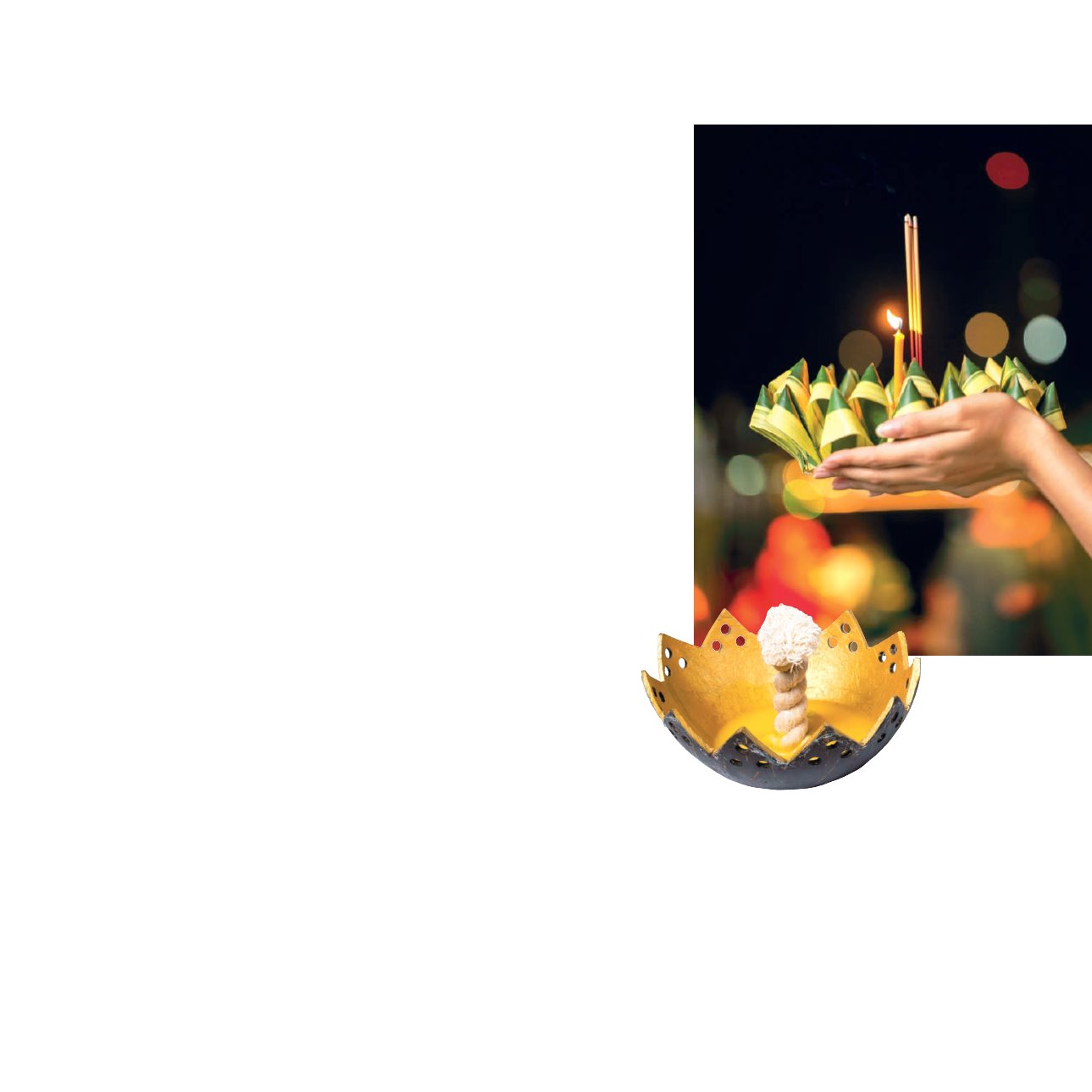

Precious Traditions and Ways of Life
|
33
Loy Krathong
The River of Life
River is the lifeblood of Thai people as they live around watersheds and make
a living with agriculture. The Loy Krathong festival therefore is an act of offering to
apologize to rivers and reverence to the streams that nourish all lives at the full
moon of the 12
th
month. As the month has the highest level of water in a year, it is
a good time to express gratitude and appreciation to the nature.
The Loy Krathong tradition is based on a belief in a ceremony of offering
apologies to rivers from the activities humans might have been done by ignorance,
such as trampling, excreting, dumping wastes to rivers and others impropriety.
In addition to expressing gratitude and apology to the rivers, Loy Krathong has many
other purposes, depending on the belief of each locality, such as worshiping the
return of Lord Buddha after the preach the Dharma at the Sawan Chan Daowadeung
(Tavatimsa Heaven); worshiping the footprint of the Buddha on the sandbanks of the
Narmada River in India; worshiping the Ket Kaew Chulamani pagoda which contains
the holy hair of Buddha at the Tavatimsa Heaven; and expelling misfortune, similar
to the sin floating ceremony of Brahman.
The apology ceremony in the Loy Krathong tradition will use floating materials
such as banana stalk, bamboo stem, etc. to make a Krathong and filled in some
sacrifice things to be floated away with water. Inside it contains a flowery worship
set, one incense stick, and one candle. In general, a Brahman Krathong is created in
the same way of a Buddhist Krathong. But the difference is that there is no flowery
worship set in a Brahman Krathong. In some local areas, people will put a piece
of betel nut, silver coins, some threads of their hair, and nails in the Krathong to
dispel the bad luck.
• “The Brahman rite of floating candles” a mural painting on
the Twelfth Month Royal Ceremony at Wat Ratchapradit
Sathit Maha Srimaram Ratchaworawihan


















